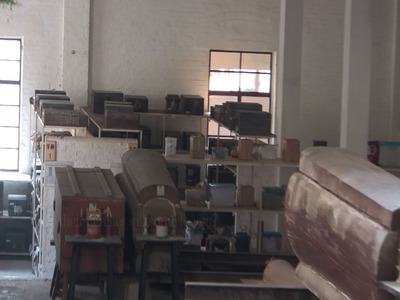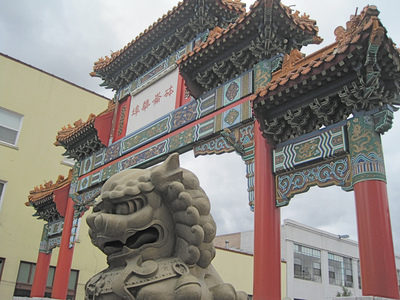Bringing Ancestors to the United States
Many of the Chinese who first immigrated to the United States during the middle 19th and early 20th centuries expected their stay to be temporary. In the event that they did not return to their homeland alive, they made arrangements for their remains to be in the United States only temporarily. Although some chose to remain buried in their new home, for almost a century the practice to be disinterred and returned to China was most common.
However, in the 1930s and 1940s, the shipment of human remains was discouraged due to political instability within China after the Japanese invasion in 1937 and establishment of the People’s Republic in 1949. Then, just a few decades later, a new trend emerged. As the historic record proves, though diplomatic relations between China and the United States have been tumultuous, beginning in the 1970s a more stabilized political relationship encouraged Chinese immigration and permanent residence in the U.S. With each decade more and more immigrants achieved citizenship and established themselves and their families in the United States. And, since the purpose of disinterment is to move remains into the care of a living descendent, the shipment of remains has reversed directions. Since the 1970s there has been a steady increase in the number of remains shipped from China to the United States.
It is customary for the oldest living relative to decide to rebury the ancestors in the United States and, ideally, a family member travels to China to personally accompany the remains. If this is not possible, sometimes family members contact funeral homes to send staff members to accompany several individuals’ remains in one trip. Once the remains arrive, reburial ceremonies are conducted and traditional holidays such as the spring Qingming Festival (Pure Brightness), in which Chinese people to visit the graves or burial grounds of their ancestors, are once again observed.
The Chinese tradition of disinterment has been practiced for over 2000 years with the understanding that the resting place of an individual’s remains need not be permanent. In fact, remains should be relocated to allow for the living to continue to observe long-established burial customs practiced so spirits of the dead can harmoniously coexist with the living. Although in recent decades a new tradition has arisen where remains in China are disinterred for reburial in the United States, the traditional customs of honor and respect for a family’s ancestors continue.
~~~~~~~~~~~~~~~~~~~~~~~~~~~~~~~~~~~
Greenwood, Roberta S. “Old Rituals in New Lands: Bringing the Ancestors to America.” Chinese American Death Rituals: Respecting the Ancestors. E. Sue Fawn Chung and Priscilla Wegars. Lanham, MD: AltaMira Press, 2005. 241-262.

The Old Tradition
Tung Wah Hospital Coffin Hall in Hong Kong
Photo Credit: Ivy Lin, 2009
Tung Wah Hospital, established in 1869, was the destination of the shipment of bones from Portland in 1949. This photograph is representative of how the Chinese remains were stored.
The Coffin Hall serves as temporary location to house the remains before being picked up by relatives or shipped to their final destinations within China.

A New Tradition
Entrance to Portland, OR Chinatown
Photo Credit: Colin Fogarty, Northwest News Network
As more Chinese Americans consider the United States their permanent home for themselves and their future descendants, many decide to disinter their ancestors buried in China for reburial in the United States.
In this way they can preserve their sense of rootedness and identity in relation to past generations.
